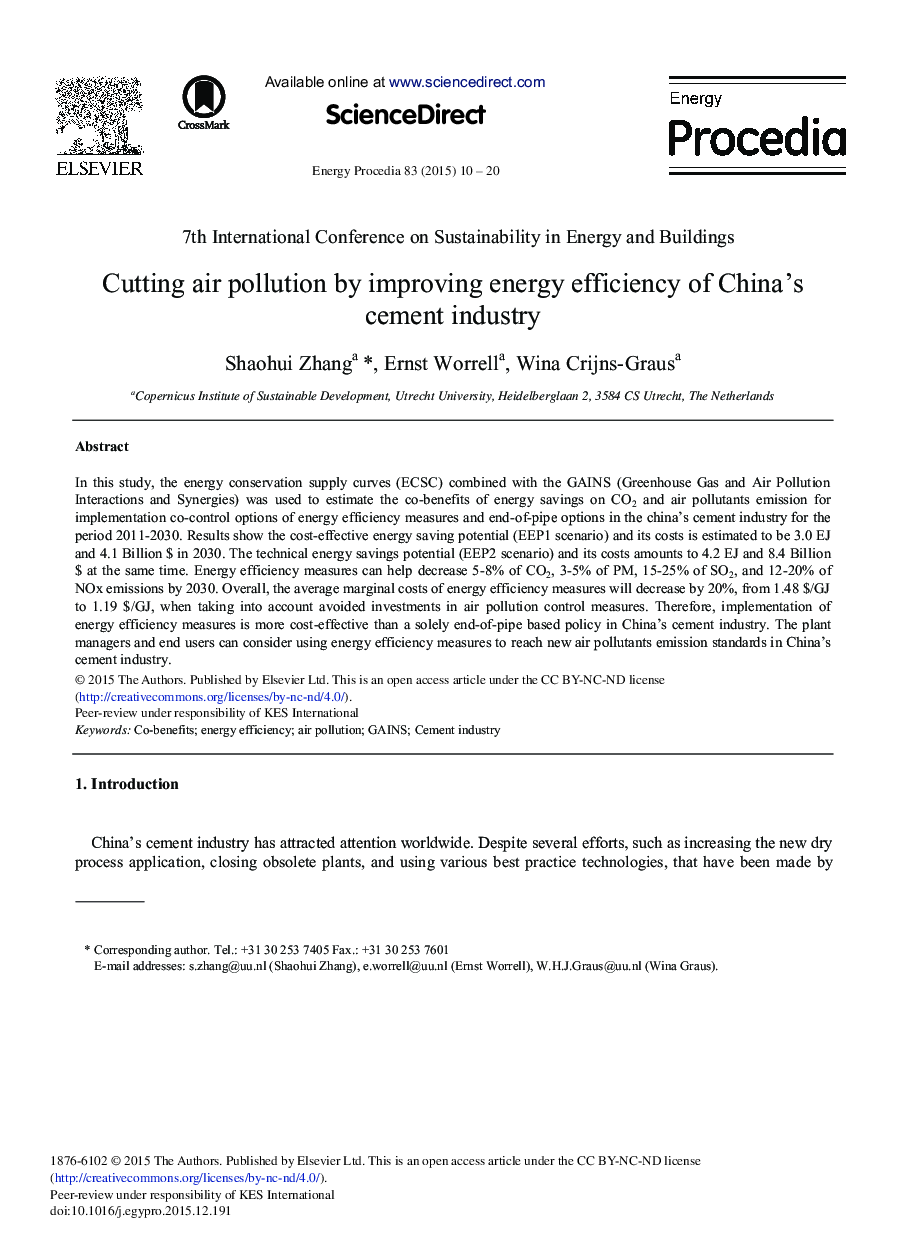| Article ID | Journal | Published Year | Pages | File Type |
|---|---|---|---|---|
| 1509134 | Energy Procedia | 2015 | 11 Pages |
In this study, the energy conservation supply curves (ECSC) combined with the GAINS (Greenhouse Gas and Air Pollution Interactions and Synergies) was used to estimate the co-benefits of energy savings on CO2 and air pollutants emission for implementation co-control options of energy efficiency measures and end-of-pipe options in the china's cement industry for the period 2011-2030. Results show the cost-effective energy saving potential (EEP1 scenario) and its costs is estimated to be 3.0 EJ and 4.1 Billion $ in 2030. The technical energy savings potential (EEP2 scenario) and its costs amounts to 4.2 EJ and 8.4 Billion $ at the same time. Energy efficiency measures can help decrease 5-8% of CO2, 3-5% of PM, 15-25% of SO2, and 12-20% of NOx emissions by 2030. Overall, the average marginal costs of energy efficiency measures will decrease by 20%, from 1.48 $/GJ to 1.19 $/GJ, when taking into account avoided investments in air pollution control measures. Therefore, implementation of energy efficiency measures is more cost-effective than a solely end-of-pipe based policy in China's cement industry. The plant managers and end users can consider using energy efficiency measures to reach new air pollutants emission standards in China's cement industry.
